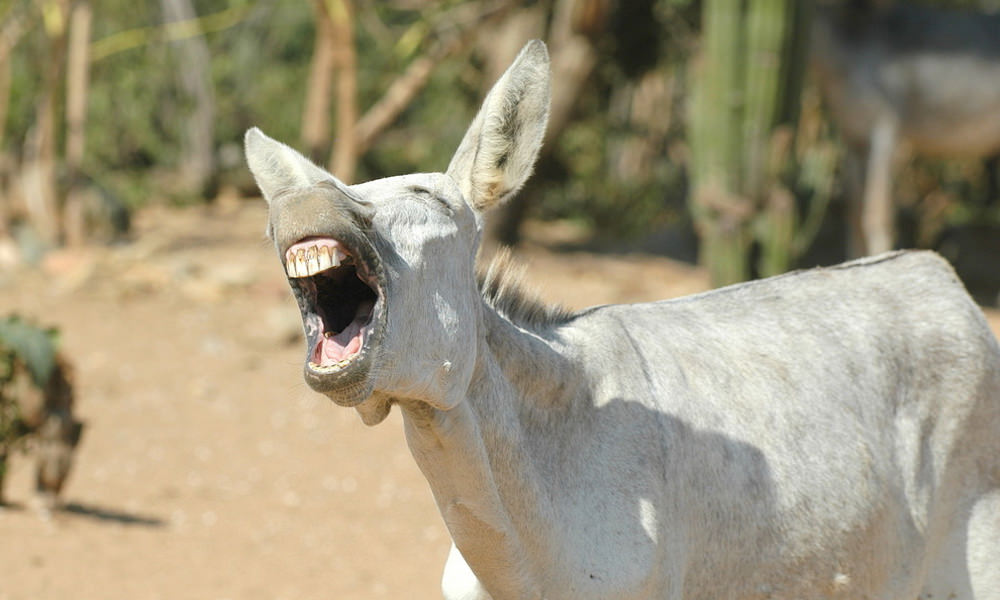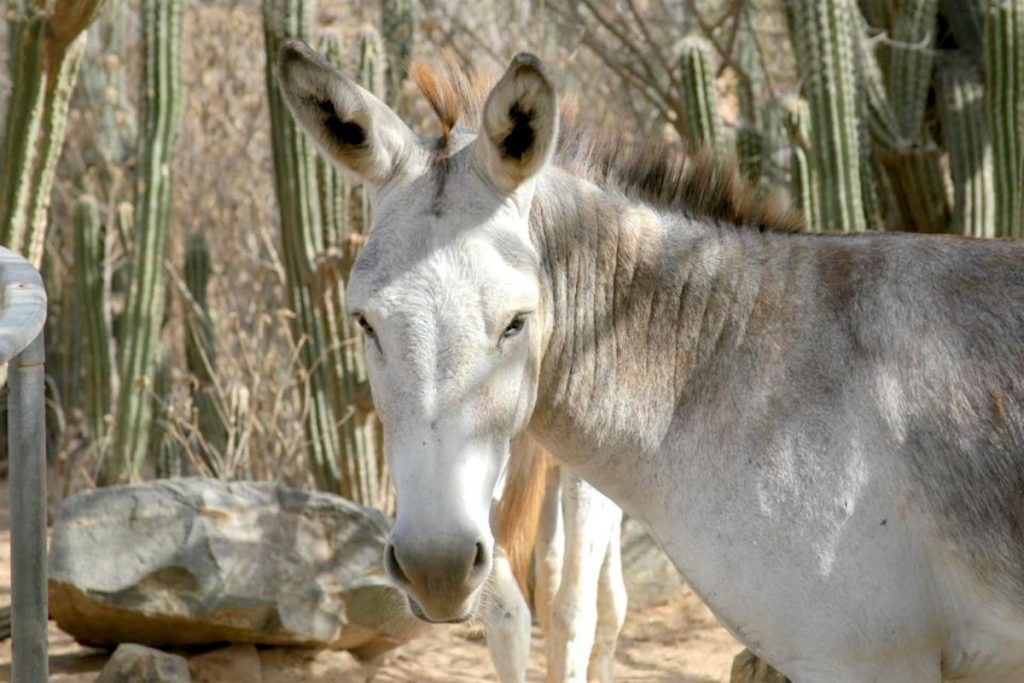
The Donkey Sanctuary Aruba was founded in 1997 as a non-profit organization that aims to save the donkeys that populate the island. For families with kids, seeing the donkeys has been one of the most popular things to do in Aruba for quite some time.
Location
The Donkey Sanctuary Aruba used to be located on Santa Lucia in Santa Cruz, just a few kilometers northwest of Arikok National Park.
Just north of the old sanctuary, you will find Andicuri Beach. The Ayo Rock Formations are also located nearby. Just recently the Donkey Sanctuary Aruba has moved to a new location in the neighborhood of Bringamosa. Bringamosa is an elevated settlement and lies roughly 70 meters above sea level. The new Donkey Sanctuary is eight times larger than the former location and can easily be reached by car or taxi.
Opening hours
The Donkey Sanctuary Aruba is open from Monday till Friday from 9 AM to 4 PM. On Saturdays and Sundays, the sanctuary is open from 10 AM to 3 PM.
Tickets and Entrance Fee
At the Donkey Sanctuary Aruba, there is no admission fee. No ticket is needed. However, donations are very much welcome! The donkeys love apples and carrots, feel free to bring some when you are planning to visit. The Donkey Sanctuary Aruba is a great place to visit with your children.
Meet the Animals of Aruba Tour

Embark on an Enriching Wildlife Adventure in Aruba! Explore the Ostrich Farm, Philip’s Animal Sanctuary, and the Donkey Sanctuary in one tour. Your visit supports these sanctuaries, making a difference for the animals.
The tour begins at the Aruba Ostrich Farm, home to 80 majestic ostriches and emus—the world’s largest birds. You’ll discover their natural behavior, and survival instincts, and have personal encounters with these incredible creatures. An educational and unforgettable journey awaits…
Up next is the Donkey Sanctuary, where you can meet the local residents!
Although not native to Aruba, these charming creatures have been part of the island’s history for 500 years, serving as the primary mode of transportation. With the advent of cars, their population dwindled, and a dangerous illness in the 1970s brought them to the brink of extinction, leaving only 20 wild donkeys. Learn about their captivating story and lend your support to their conservation efforts.
This tour has a duration of about 4.5 hours.
Free pick-up and drop-off at your hotel or cruise ship can be arranged.
The History of the Donkey in Aruba
During the colonial era, the donkey was brought to the island by the Spanish to fulfill all kinds of purposes. However, the donkey became a beast of burden because the animal was mainly used for transportation of humans but also for all kinds of rather heavy stuff. When their usefulness ended after the introduction of other types of transportation, they were released of their duties and forced to provide for themselves. Many donkeys were set free to go live in the wild.
The population of the donkey increased over time and eventually the donkeys became a nuisance because there were just too many occupying the island. It is said that their population grew well to over a thousand. People decided to shoot them, feed them to other animals with the sole purpose to decrease the population. The donkey also became a real problem for traffic, especially during the night. Many donkeys got hit by cars, buses, and trucks when they were walking or just standing on dark roads. As a result, the donkey population decreased. Some 40 years ago the population got hit by a rapidly spreading disease and the donkey almost vanished from the island.
Only a small group survived.
At that time, a movement of volunteers stood up and began to save and take care of the Aruban donkeys. This movement realized very well that the donkey had to survive on Aruba since the animal already had been on the island for almost 500 years! Today, the humble non-profit Donkey Sanctuary Aruba provides food, shelter, and medical care to almost two hundred animals. They even get a name when they arrive. Visitors can feed and pet the donkeys, and locals are encouraged to adopt them.
Amenities and Souvenirs
At the Donkey Sanctuary Aruba refreshments and snacks are available. There is also a gift shop where you can buy all kinds of souvenirs. The newly built visitors center offers shade and restrooms and there is sufficient room for parking.
5 Things To Know About Donkeys
- Despite their relatively small stature, donkeys are known for their remarkable strength. They possess a sturdy build and can carry heavy loads, making them ideal pack animals in various parts of the world.
- Donkeys are renowned for their exceptional memory skills. They can remember places, people, and other animals for many years. This remarkable ability aids their survival and allows them to navigate their environment effectively.
- Donkeys are famous for their distinctive vocalizations known as braying. Their loud, melodious call is a combination of different sounds, including grunts, hee-haws, and snorts. Each donkey has its distinct bray, which helps individuals recognize each other.
- Donkeys are social creatures and form strong bonds with other donkeys and species. They often display affectionate behaviors like nuzzling and grooming one another. In their natural habitat, they typically live in herds, offering each other protection and companionship.
- Donkeys possess a keen sense of self-preservation. They are known for their cautious nature and ability to assess potentially dangerous situations. They may stand their ground, bray loudly, or even try to protect themselves and others from potential harm if they feel threatened.